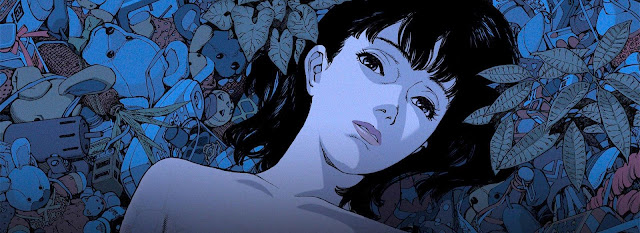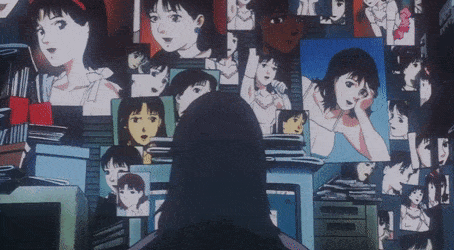Perfect Blue 25th Anniversary Film Review
So the Alamo Drafthouse theaters put Perfect Blue back in theaters for a special 25th anniversary watch party. Perfect Blue is one of the most famous anime movies of the nerd community. You may have seen gifs of it's most iconic shots in slowed and reverb music videos or in general use on social media. Now, I've seen them in context. I've watched Satoshi Kon's other famous movie, Paprika, years ago. Paprika was very weird and surreal, but I didn't really like it that much. Still, that didn't deter me from wanting to see Perfect Blue as others on the internet suggested I might like it better and I ultimately did.
Being a film from 1997 Perfect Blue is draped in 90s aesthetics with its animation, fashion, and dial up internet. The film was also meant for theaters. Although it's an animated film it's shot like a live-action film at times with zoomed out edits like one that centers on a character in the bedroom and pans out overlooking the city and characters coming into frame from reflections. It also takes advantage of the animated media as well by incorporating exaggerated expressions and blending in two different characters in a scene. Perfect Blue is amazing to look at. The animation is fluid yet has that gruff of the ninety's. Now off from the visuals let's get to what Perfect Blue is about.
Perfect Blue tells the tale of a young Japanese pop idol named Mima leaving the music industry to pursue a career in acting and modeling. It appears that Mima seems conflicted about leaving the idol industry. She accepts a risque scene in a movie and shortly after she is in the center of a murder conflict as members of the industry she was involved with are found dead. This is when the movie starts to pick up. The beginning of the film is really slow and I was debating if I wanted to leave or not, but once a particular hard to watch scene came up I had to stay and watch and once the main conflict arrived I was hooked. Perfect Blue becomes a psychological thriller in every sense of the word. It plays with the viewer's perception of what is real and what isn't, who is to be trusted, and having you on the edge of your seat wondering if Mima will survive. Perfect Blue can also be seen as commentary on celebrity fame and worship and some of the worst problems that can come with that that I think the film does incredibly well at representing. This film also has some nudity in it that I wasn't expecting and I'm not going to lie it did make me feel a bit uncomfortable watching these scenes in public.
Despite that, I still enjoyed the movie and was hooked by the end, but still left with a lot of questions concerning the ending. This is definitely a film I have to watch at least two more times to comprehend everything and that's not a negative by any means. It's not the result of poorly constructed writing, but writing that was intriguing and left enough mystery so I want to see how the hints lined up to the conclusion. So for my non-spoiler review go and see Perfect Blue. It's not in theaters anymore, but you can catch it on Prime Video or by those other means anime fans are familiar with. One of Satoshi Kon's other films Millennium Actress is completely free to watch on YouTube so I'll be checking that out as well.
SPOILERS FROM HERE ON OUT!
So in the final scene of the movie we discover that Mima is not crazy and actually the visions she saw of herself was her manager Rumi. Rumi had been committing the murders and feeding the obsessed fanboy and stalker with personal information about Mima to put up on the fan page. Rumi was just as obsessed and upset about Mima potentially ruining her career and was trying to save her image. On first viewing I wasn't clear why. Perhaps Rumi used to be in the music or acting industry herself, but never made it, but once she got the chance to be Mima's manager she vicariously lived through her and couldn't take it once Rumi started doing things she thought was unbefitting of an idol like her. From the film it definitely seemed like the other Mima was a figment of Mima's imagination and at one point I was even wondering if the stalker was real until she ultimately faced him and fought him. There was also the time loop where Mima constantly ended back in her own bed after a shoot near the water. There is so much to unpack and make sense of. A second viewing should help me connect the pieces. I can't wait to watch this again.




Comments
Post a Comment